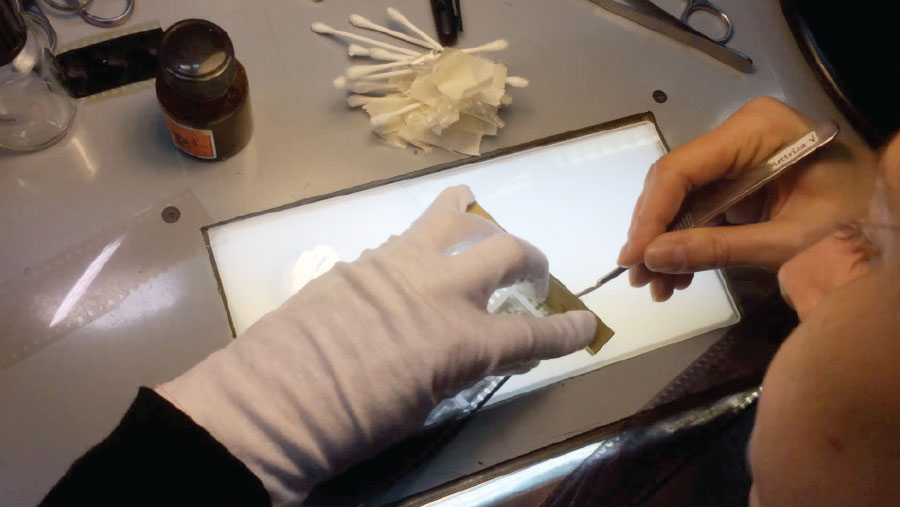
The Restoration
In 1992, the Academy of Motion Picture Arts and Sciences presented an honorary lifetime achievement Oscar to director Satyajit Ray. When sourcing material from Ray’s films for the Academy Awards ceremony, telecast producers were dismayed by the poor condition of the existing prints. The following year, after Ray’s death, a project was initiated to restore many of Ray’s films, including those in The Apu Trilogy.
In 1993, several of the filmmaker’s original negatives were shipped to Henderson’s Film Laboratories in London. In July, a massive nitrate fire at the lab spread to the film vaults, destroying more than twenty-five original negatives of important British classics—and burning several Ray films, including the original negatives of The Apu Trilogy. Any ashes, fragments, or film cans that could be identified as belonging to Ray’s films were sent to the Academy Film Archive, but the trilogy negatives were deemed unprintable—there were no technologies available at the time that were capable of fully restoring such badly damaged film elements.
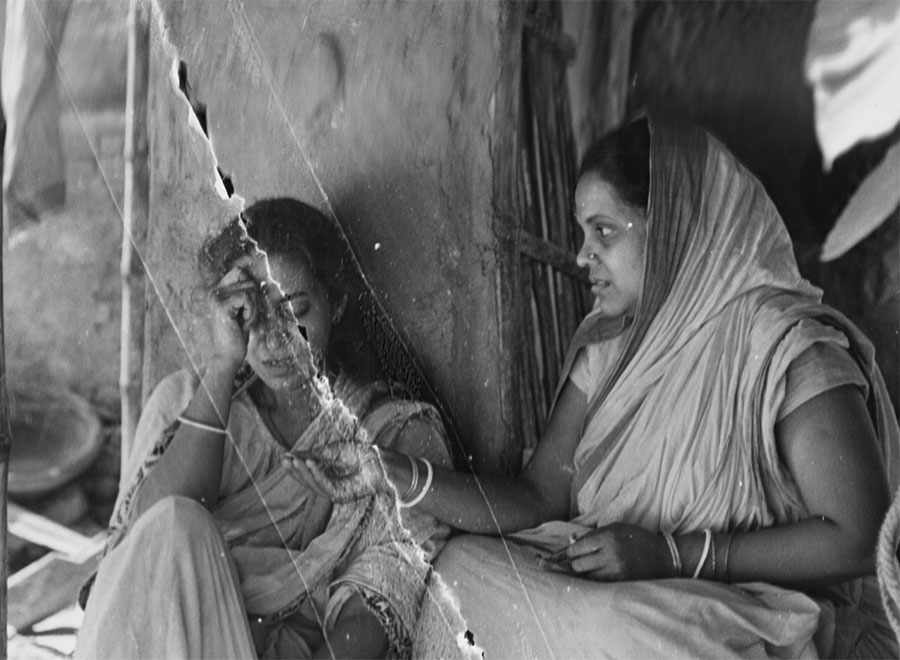
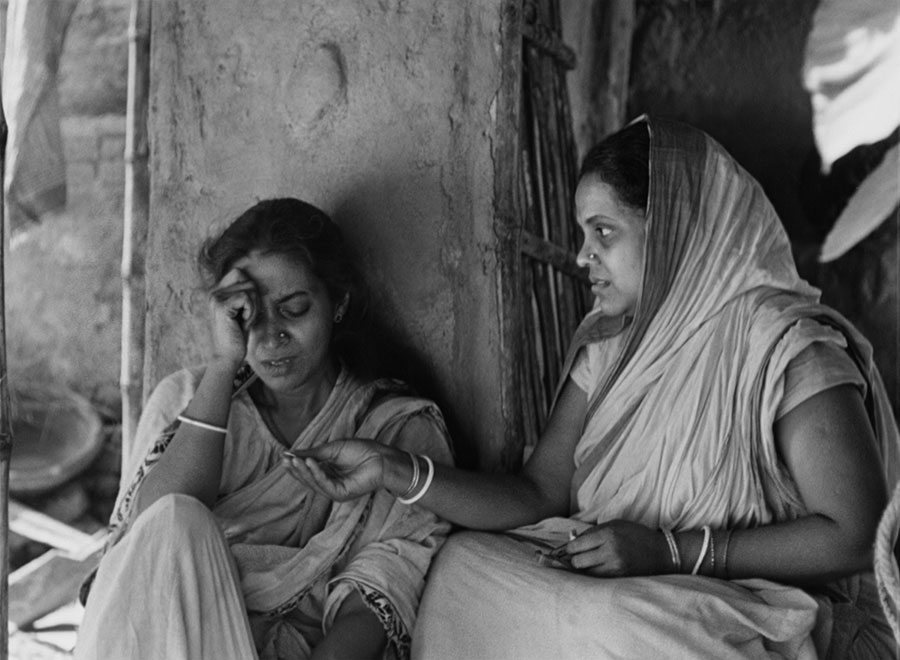
When the Criterion Collection began working on this restoration with the Academy Film Archive in 2013, the negatives were in storage and hadn’t been seen in twenty years. Many portions were indeed burned to ash, and what remained was startlingly fragile, thanks to deterioration and the heat and contaminants the elements had been exposed to. Head and tail leaders were often missing from reels. Yet significant portions survived, from which high-quality images might be rendered.
No commercial laboratory would handle this material, so it was entrusted to L’Immagine Ritrovata in Bologna, one of the world’s premier restoration facilities. There, technicians successfully rehydrated the brittle film using a special solution (one part glycerol, one part acetone, three parts water). Scanning tests determined that pin-registered wet-gate scans yielded the best results. Technicians then set about physically repairing the elements. This meant almost a thousand hours of meticulous hand labor, which even included rebuilding the perforation holes on the sides of the film and removing melted tape and glue. Using fine-grain masters and duplicate negatives preserved by Janus Films, the Academy, the Harvard Film Archive, and the British Film Institute, the technicians found excellent replacements for the unusable or missing sections of the original negatives. In the end, 40 percent of Pather Panchali and over 60 percent of Aparajito were restored directly from the original negatives. The two surviving reels of Apur Sansar were too damaged to be used in the restoration, so all of that film was restored from a fine-grain master and a duplicate negative.
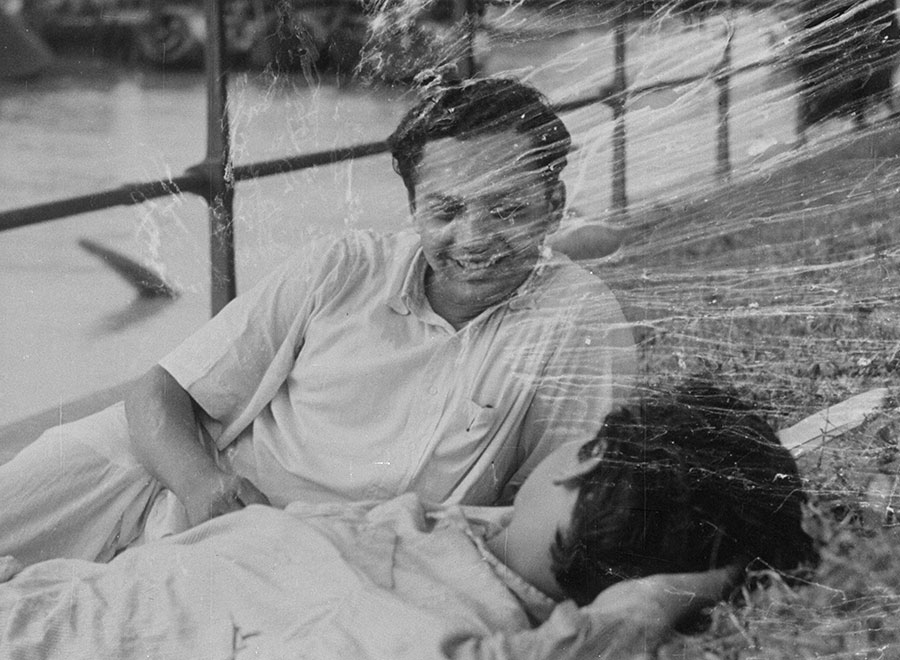
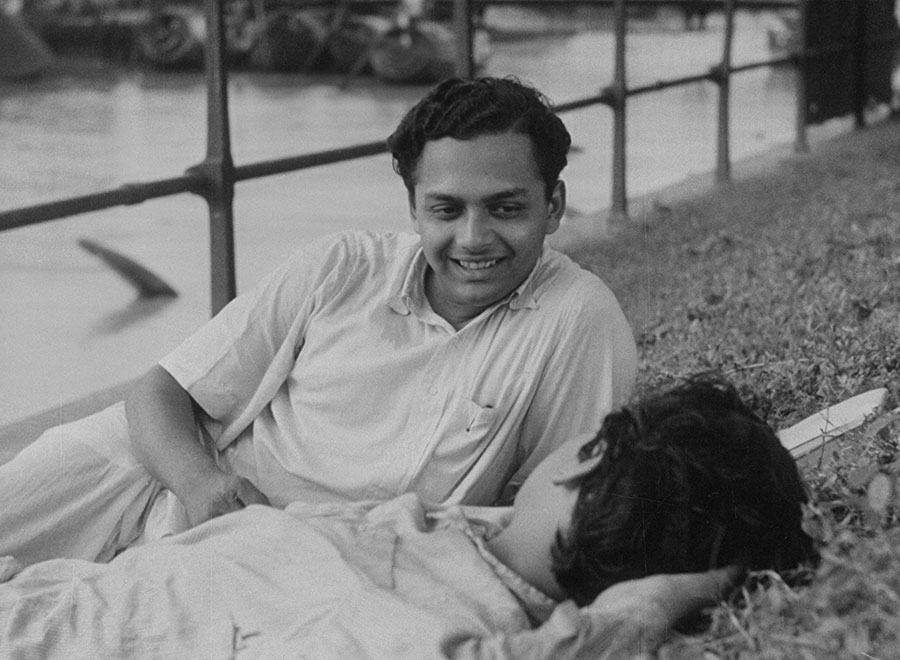
Over the course of nearly six months of steady work, the Criterion Collection restoration lab handled the digital restoration, including eliminating dirt, debris, warps, and cracks. Emphasis was placed on retaining the look and character of the original material, preferring when necessary to leave damage rather than overprocess digital images that might lose the grain and feel of film.
All in all, the restoration of The Apu Trilogy has been years in the making. The return of these films to theaters marks a triumph for the archivists and members of the preservation community who had the foresight and faith to protect these vital treasures of world cinema—even when all seemed lost.

